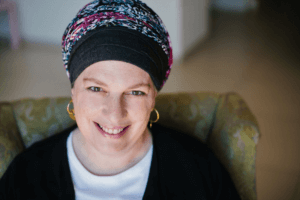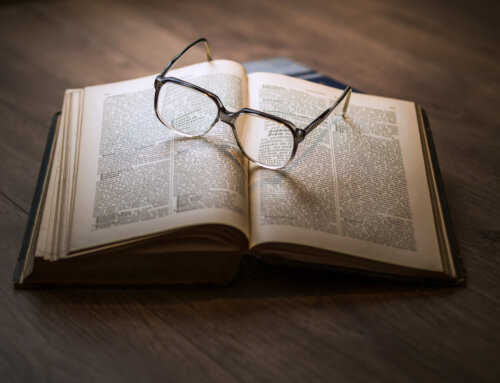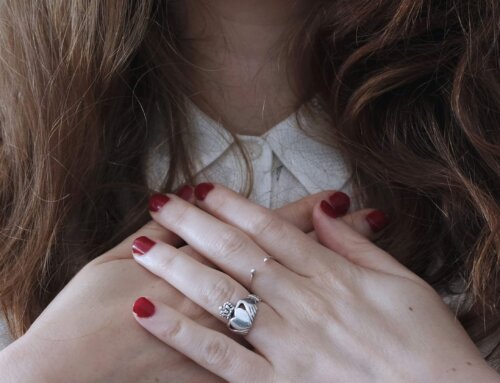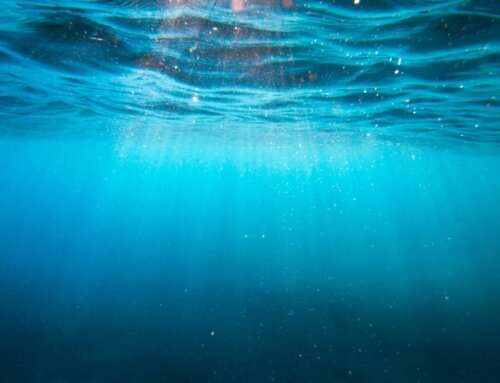 I used to be a devout person. I walked around with God’s presence on my shoulder; I loved praying and I rejoiced in my spiritual life.
I used to be a devout person. I walked around with God’s presence on my shoulder; I loved praying and I rejoiced in my spiritual life.
Many years have passed since then, and behold, standing before my Creator in prayer is no longer a ‘must have’, but more of a ‘when, exactly?’ I know, I know , it’s supposed to be a priority, but I slipped, I stumbled, and here I am, praying once a month. In the nude.
I’m exactly the kind of woman you’d expect to go to mikveh. You might guess that by my dress: comfortable, covered up, scarved. But did you know that I’m a feminist? And chassidishly inclined? And that kabbalah has a comfortable place in my home alongside gentle environmentalism? And did you guess how this all achieves its perfect union in the mikveh?
O mikveh, how do I love thee? Let me count the ways!
One, you are all about water, that which nourishes our bodies, cleanses our skin, heals us inside and out. Water is the principal element of our bodies and of our earth, so you know right there that it’s holy. People talk about the experience of mikveh as rebirth, and didn’t we all of us begin our lives enclosed in and protected by water in our mother’s womb?
Two, you are about women, celebrating our bodies, but in the most spiritual possible way. Mikveh is about elevating ourselves: we immerse our bodies to touch the Infinite. In the mikveh we stand in our own skin, and know to be comfortable in it.
Three, you are about action, not knowledge or intellect. I love my brains, I do. I read incessantly, and once upon a time I pored over the tiny texts of Torah in all its varieties. But doing Torah is different from learning it, raising idea to actuality. Dancing on Simchat Torah in joyful celebration of that Book which defines our lives, lighting candles on Friday night and blessing their light, sitting under the leafy cover of the sukkah and remembering where we came from and how far we’ve come – these are all actions that connect us to our roots and to our future. The mikveh demands that I use my whole body, that I engage in the mitzvah completely.
Four, you allow me to pray as I wish, at my own pace.
***
I pray with spiritual notions in my heart, and it starts by choosing something to pray for. If nothing in particular pops into my head, I most often pray for “shalom bayit” (a peaceful home) or for good health. Sometimes there is something specific I want to pray for: May our aliyah be successful. May the job hunt be fruitful. May rain fall on Israel.
I immerse seven times altogether. When I first married, I immersed twice, once before the brachah and once after. I did that for many years, until I had the opportunity on a few occasions to stand in for the mikveh lady. I learned a few things from the perspective at the top of the mikveh stairs: that no one is looking at your body; that women appreciate the privacy afforded by a raised towel as they enter and leave the water; that they prefer not to be rushed; that each woman has her own way of standing and immersing herself.
I had always stood in the mikveh facing a certain direction, and lowered myself into the water in what I thought was a typical way, but as a mikveh lady I learned that women face all directions and that there is no “typical”. Women immerse twice, three times, seven times, carefully, splashily, noisily.
Now I wondered how I could make my own tevilah more meaningful. And so my kabbalistic plan was hatched: I would immerse according to the sefirot.
The kabbalah explains as follows: there is a structure that helps create a connection between the Infinite and the finite, between God and each of us. This structure contains (and is built upon) the emanations of God, called sefirot. Each sefirah carries its own spiritual identity, describing a different way that God interacts with us. Moving from the spiritual to the physical realm, they are: Chesed, Gevurah, Tiferet, Netzach, Hod, Yesod, and Malchut. (Lovingkindness, Strength, Glory, Victory, Splendour, Foundation, and Sovereignty.)
In the mikveh, I draw the meaning of each of these sefirot into my prayers. I stand in the water and begin to pray as follows: “God, in the merit of my going to mikveh, please send a brachah for ….”. I think of the first of the sefirot, “Chesed”, and in my mind, connect “Chesed” with my subject.
When praying for success in aliyah, for example, I might say “God, show us your outstretched hand, and bless us with your Chesed that we might stay in your holy land.” I immerse myself. Then, I connect my prayer with the second sefirah, “Gevurah”: “God, give us the strength we need to be successful in our aliyah.” I immerse. And so on, through the seven sefirot.
This is not a speedy event.
After each immersion I remind myself which sefirah I’m up to, what this sefirah means, and consider how to apply that meaning to my tefilah. I then compose a prayer, my eyes closed tightly with intent, my hands facing upwards in the water, as if to catch the blessings, or radiate my hope upwards. When I immerse, I am conscious of my body in the water and then of my head breaking the surface of the pool, moving gently from water to air: re-born.
***
It stays with me, this other-worldliness, as I dry my feet, wrap a scarf around my head, pick up my bag. My body, my mind, seem somehow less earth-bound. In one sparkling moment, my ordinary self became an vessel of prayer and I connected to the Infinite. I was – I am – transformed.
Shev Simon is a life coach for business owners, and is passionate about connecting to your inner strength, light, and truth.
She worked for over a decade in women’s health, as a passionate doula and childbirth educator in NY, Philly, and Israel, and by teaching fertility awareness to Orthodox women. She later trained and volunteered as a lay chaplain, providing spiritual support to families facing serious illness.
Shev is British, married to an American, and they live in Israel with their funny, noisy teens.






Thank you for this beautiful piece Shev!